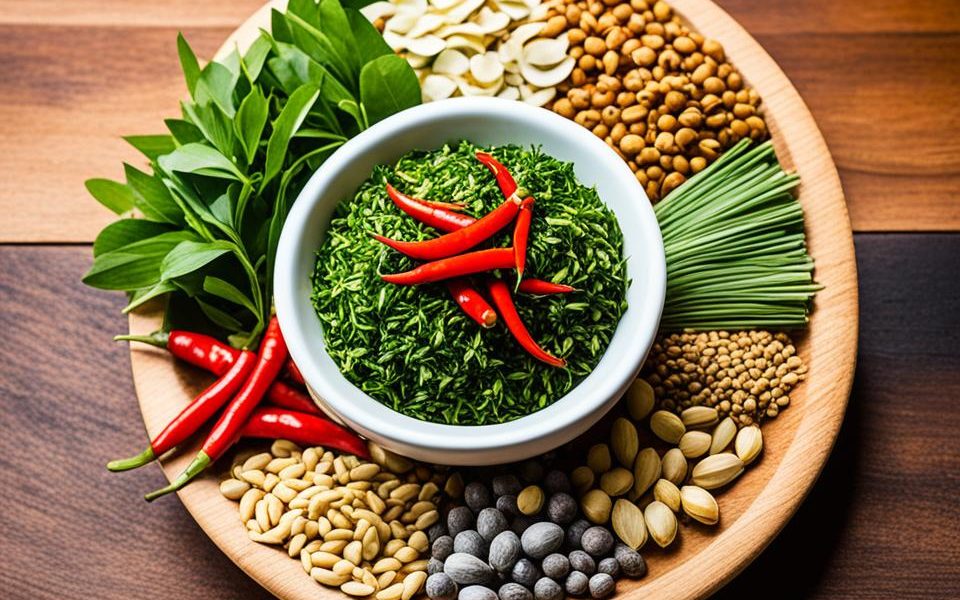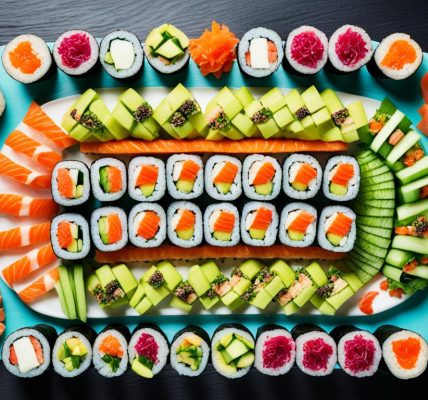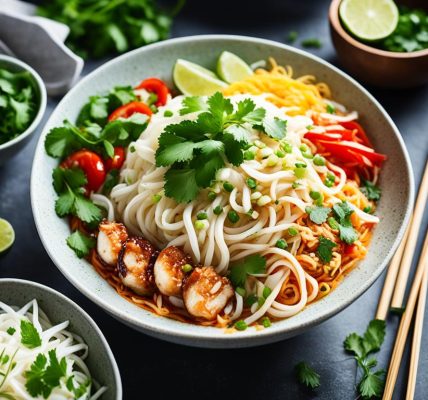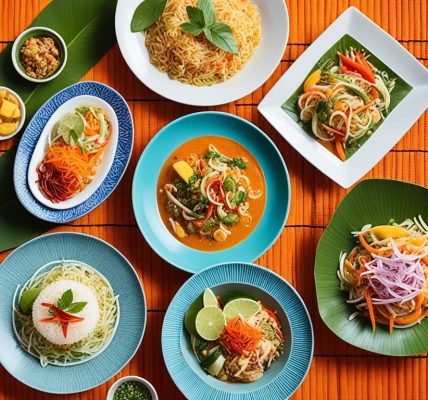Thai cuisine has gained immense global popularity due to its unique and harmonious blend of sweet, sour, salty, and spicy flavors. Exploring the historical origins, diverse ingredients, and cooking techniques that contribute to Thai food’s distinct character can help unpack the reasons behind its widespread appeal. This article delves into the cultural significance, flavor profiles, health benefits, and regional variations of Thai cuisine, providing insights into why it has become one of the world’s most beloved and sought-after culinary experiences.
Introduction
Thai cuisine has captivated taste buds across the globe, becoming one of the most popular and beloved culinary traditions worldwide. From its rich historical roots to its vibrant cultural influences, Thai food has earned a reputation for its exceptional flavors, diverse ingredients, and unique cooking techniques. This section introduces the global appeal of Thai cuisine, exploring the factors that have contributed to its widespread popularity and set the stage for a deeper dive into the qualities that make it a must-try culinary experience for food enthusiasts around the world.
The Global Appeal of Thai Cuisine
The allure of Thai cuisine extends far beyond Thailand’s borders, captivating taste buds and imaginations across the globe. This culinary tradition has managed to transcend geographical and cultural boundaries, becoming a beloved and sought-after cuisine in countries near and far. The reasons behind its global popularity are multifaceted, rooted in both the unique flavors and the cultural significance of Thai food.
Exploring the Reasons Behind Its Popularity
The popularity of Thai cuisine can be attributed to a combination of historical, cultural, and culinary factors. From its ancient roots and diverse influences to its harmonious blend of flavors and innovative cooking techniques, Thai food has become a culinary phenomenon that continues to captivate and delight food enthusiasts worldwide. By understanding the rich tapestry of Thai food culture and the distinctive qualities that set it apart, we can better appreciate the reasons why it has become one of the world’s most celebrated and beloved culinary traditions.
Thai Food History and Cultural Significance
Thai cuisine has deep roots that are intertwined with the country’s rich cultural heritage. Over the centuries, the flavors and cooking techniques of Thai food have been shaped by a tapestry of regional and international culinary influences, creating a truly unique and captivating gastronomic experience.
Ancient Roots and Influences
The origins of Thai cuisine can be traced back to the ancient Siamese kingdoms, where the royal courts and local communities developed distinct regional culinary traditions. These early foundations were further enriched by the exchange of ideas and ingredients from neighboring countries, such as China, India, and Malaysia, as well as the influence of European traders and colonizers who introduced new ingredients and cooking methods to the Thai culinary landscape.
The Blend of Diverse Culinary Traditions
Thai food is a harmonious blend of diverse culinary traditions, seamlessly integrating the flavors and techniques of its regional and international influences. The central Thai cuisine, for instance, is known for its refined and delicate flavors, while the northern Thai cuisine showcases the robust and earthy flavors of its mountainous terrain. The southern Thai cuisine, on the other hand, is characterized by its liberal use of seafood and spices, reflecting the region’s coastal heritage. This remarkable diversity in Thai cuisine not only adds to its richness but also underscores the cultural dynamism that has shaped it over the centuries.
By understanding the historical context and cultural significance of Thai food, we can better appreciate the complexity and nuances that make it a truly unique and captivating culinary experience. The deep roots and diverse influences that have shaped Thai cuisine are a testament to the country’s vibrant cultural heritage and its enduring culinary legacy.
Why Thai Food
The key to the enduring popularity of Thai cuisine lies in its exceptional balance of flavors. Thai dishes masterfully blend the harmonious elements of sweet, sour, salty, and spicy to create a truly captivating culinary experience. This harmonious blend of flavors, achieved through the strategic use of Thai food ingredients and Thai cooking techniques, is what sets Thai cuisine apart and has made it a beloved favorite among food enthusiasts worldwide.
Harmonious Blend of Flavors
At the heart of Thai cuisine is the principle of achieving a harmonious balance of flavors. Each dish is carefully crafted to showcase the interplay of sweet, sour, salty, and spicy notes, creating a symphony of tastes that delights the palate. This delicate balance is a hallmark of Thai cooking, where the skilled use of ingredients like palm sugar, tamarind, fish sauce, and chilies results in a flavor profile that is both complex and deeply satisfying.
Versatility in Taste Profiles
Beyond the harmonious blend of flavors, Thai cuisine is renowned for its remarkable versatility. From the rich, creamy curries of the south to the bold, spicy dishes of the north, Thai food offers a diverse range of taste profiles that cater to a wide variety of preferences and dietary needs. This adaptability has contributed greatly to the global appeal of Thai cuisine, allowing it to be enjoyed and appreciated by people from all walks of life.
Thai Food Ingredients
Thai cuisine’s vibrant and distinctive flavors are achieved through the strategic use of a wide array of
herbs, spices, and other unique ingredients
. These
thai food ingredients
play a crucial role in defining the overall taste profile of Thai dishes, each contributing its own unique aroma, texture, and health-promoting properties.
Essential Herbs and Spices
At the heart of Thai cooking lie several
essential herbs and spices
that are integral to the cuisine’s signature flavors. Lemongrass, with its bright, citrusy notes, is a ubiquitous ingredient, often used in soups, curries, and stir-fries. Kaffir lime leaves, with their distinctive aroma and subtle bitterness, add depth and complexity to many Thai preparations. Galangal, a close relative of ginger, imparts a slightly peppery, pine-like flavor that is essential in Thai curries and stews.
Unique Ingredients and Their Roles
Beyond the core herbs and spices, Thai cuisine also features a wide array of
unique ingredients
that contribute to its diverse flavor profiles. Fish sauce, a pungent, umami-rich condiment, is a ubiquitous ingredient that adds depth and saltiness to many Thai dishes. Coconut milk, with its creamy richness, is a staple in curries and soups, while fresh chili peppers, in all their varying degrees of heat, provide the signature spice that is integral to Thai cuisine. The interplay of these
thai cooking techniques
and ingredients creates the harmonious and captivating flavors that have made Thai food a global sensation.
Thai Cooking Techniques
The art of Thai cooking techniques is not merely about the use of distinctive ingredients, but also the meticulous methods employed to bring out the best in each component. From the sizzling stir-fries to the delicate steaming, Thai cuisine showcases a diverse array of cooking techniques that contribute to its captivating flavors and textures.
One of the hallmarks of Thai cooking techniques is the use of the wok, a versatile pan that allows for the rapid, high-heat cooking essential to many Thai dishes. Stir-frying is a prominent technique, where ingredients are swiftly tossed and seared over intense heat, locking in the natural juices and imparting a delightful charred aroma.
Beyond the wok, Thai cooking techniques also involve the art of steaming, where delicate ingredients like seafood and vegetables are gently cooked in the gentle embrace of steam, preserving their freshness and delicate flavors. The use of grilling and charcoal-firing also plays a significant role, adding a smoky complexity to dishes like the iconic satay.
| Thai Cooking Technique | Description | Contribution to Flavor and Texture |
|---|---|---|
| Stir-frying | Rapidly cooking ingredients over high heat in a wok | Sears ingredients, locks in juices, and imparts a charred aroma |
| Steaming | Gently cooking ingredients using the gentle heat of steam | Preserves the natural flavors and delicate textures of ingredients |
| Grilling/Charcoal-firing | Cooking over hot coals or open flame | Adds a smoky complexity and caramelized notes to dishes |
These Thai cooking techniques, combined with the thoughtful selection of herbs, spices, and other ingredients, allow Thai chefs to craft dishes that are both visually stunning and bursting with flavor. By understanding and mastering these techniques, home cooks can unlock the secrets to recreating the authentic tastes of Thailand in their own kitchens.
Popular Thai Dishes
Thai cuisine is renowned for its diverse and delectable array of dishes, each with its own unique flavor profile and cultural significance. In this section, we’ll explore some of the most popular and iconic Thai dishes that have captivated the hearts and taste buds of food enthusiasts around the world.
Tom Yum Goong (Spicy Shrimp Soup)
One of the most recognizable and beloved popular Thai dishes is Tom Yum Goong, a spicy and sour shrimp soup. This aromatic dish combines the tangy flavors of lemongrass, kaffir lime leaves, and galangal with the savory richness of shrimp, fish sauce, and fresh herbs. The perfect balance of sweet, sour, and spicy elements makes Tom Yum Goong a quintessential Thai culinary experience.
Pad Thai (Stir-Fried Rice Noodles)
Another iconic popular Thai dish is Pad Thai, a stir-fried rice noodle dish that has become a global favorite. This vibrant and flavorful creation features a harmonious blend of tamarind, fish sauce, palm sugar, and a variety of fresh ingredients, including shrimp, bean sprouts, peanuts, and eggs. The unique flavors and textures of Pad Thai have made it a staple of Thai cuisine, both in Thailand and around the world.
Som Tam (Spicy Green Papaya Salad)
Hailing from the northeastern region of Thailand, Som Tam is a refreshing and punchy popular Thai dish that showcases the country’s love for bold and zesty flavors. This spicy green papaya salad combines shredded unripe papaya with a dressing of fish sauce, lime juice, chilies, and a variety of crunchy additions, such as cherry tomatoes, peanuts, and dried shrimp. The result is a vibrant and flavor-packed dish that tantalizes the taste buds.
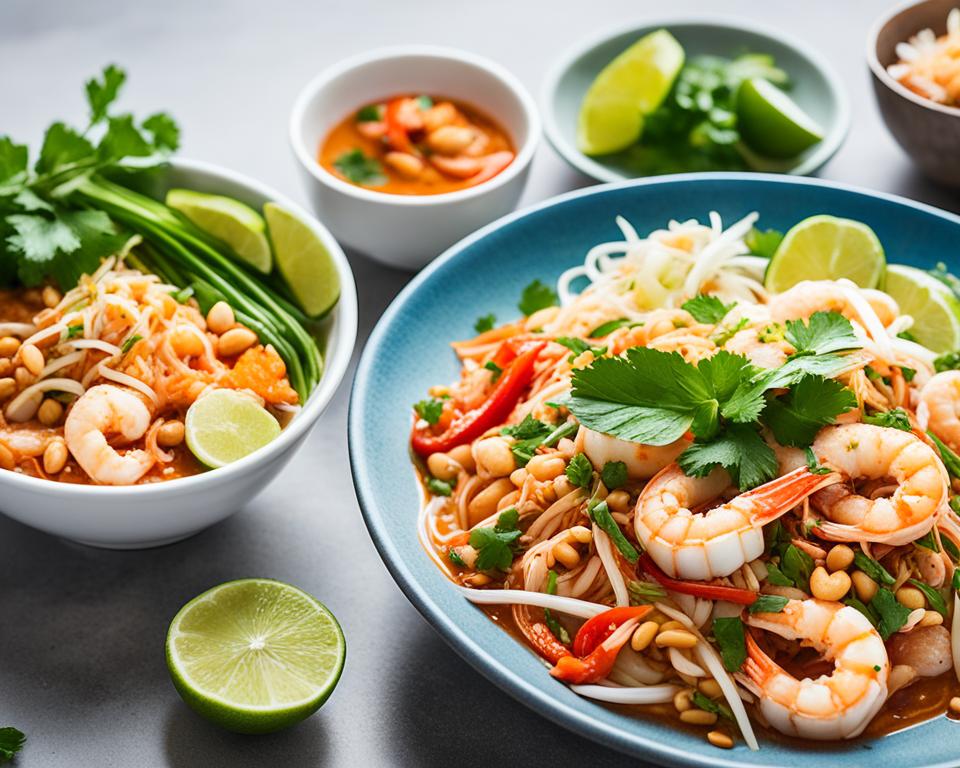
Regional Thai Food Varieties
Thai cuisine is not a single, monolithic entity, but rather a vibrant culinary landscape that reflects the distinct regional differences and cultural influences across the country. From the aromatic and herb-infused dishes of the north to the fiery and seafood-centric flavors of the south, each region of Thailand has developed its own unique approach to regional thai food varieties.
Northern Thai Cuisine
The northern region of Thailand is renowned for its distinct regional thai food varieties, characterized by the use of aromatic herbs, savory curries, and a preference for steamed or grilled dishes. Signature northern Thai dishes include the iconic khao soi, a curry noodle soup with egg noodles and tender meat, as well as the fragrant and spicy larb, a salad made with minced meat, herbs, and a tangy lime dressing.
Southern Thai Cuisine
In contrast, the southern Thai cuisine is heavily influenced by the region’s abundant access to fresh seafood and the robust flavors of chili peppers. Regional thai food varieties from the south often feature dishes like massaman curry, a rich and creamy curry with a blend of aromatic spices, and Tom Yum Goong, the iconic spicy and sour shrimp soup that has become a global sensation.
Central Thai Cuisine
The central region of Thailand, including the capital city of Bangkok, is known for its regional thai food varieties that often strike a balance between the various regional styles. Dishes like Pad Thai, the quintessential Thai stir-fried noodle dish, and the fragrant Tom Kha Gai, a coconut milk-based chicken soup, have become beloved staples of Thai cuisine worldwide.
By exploring these distinct regional thai food varieties, we can gain a deeper appreciation for the depth and richness of Thai culinary traditions, each with its own unique flavors, ingredients, and cultural influences.
Thai Food Health Benefits
In addition to its exceptional thai food flavors, Thai cuisine is renowned for its potential health benefits, owing to the nutrient-rich ingredients and balanced flavor profiles that are characteristic of Thai dishes. From fresh herbs and vegetables to unique spices and whole-food components, the ingredients used in thai food offer a wealth of essential nutrients, antioxidants, and anti-inflammatory properties that can contribute to overall health and well-being.
Nutrient-Rich Ingredients
Thai cuisine is built upon a foundation of fresh, whole-food ingredients that are packed with essential vitamins, minerals, and other beneficial compounds. Ingredients like lemongrass, galangal, kaffir lime leaves, and chili peppers are not only integral to the signature flavors of thai food, but they also provide a range of health-promoting nutrients. These ingredients are rich in antioxidants, have anti-inflammatory properties, and can support immune function, digestive health, and cardiovascular well-being.
Potential Health-Promoting Properties
The unique blend of flavors in thai food, including the harmonious combination of sweet, sour, salty, and spicy elements, may also offer potential health benefits. Some studies suggest that this balance of flavors can positively impact metabolic processes, aid in digestion, and even have neuroprotective effects. Additionally, the emphasis on fresh, whole-food ingredients and the use of cooking techniques like stir-frying and steaming can help preserve the nutrient density of Thai dishes, making them a potentially healthier culinary choice.
As the popularity of thai food continues to grow around the world, the recognition of its potential health benefits has also increased. By understanding the nutrient-rich ingredients and the unique flavor profiles that define Thai cuisine, food enthusiasts can not only enjoy the exceptional taste of Thai dishes but also explore the potential health-promoting properties that make them a truly unique and desirable culinary experience.
Thai Restaurant Recommendations
For those seeking to fully immerse themselves in the flavors of authentic [thai restaurant recommendations], this section provides recommendations for finding the best Thai restaurants, both within Thailand and around the world.
Authentic Thai Dining Experiences
When exploring [thai restaurant recommendations], it’s crucial to seek out establishments that offer a truly authentic Thai dining experience. Look for restaurants that source their ingredients locally, employ skilled chefs trained in traditional Thai cooking techniques, and maintain a warm, welcoming ambiance that transports you to the heart of Thailand.
Tips for Choosing a Great Thai Restaurant
Selecting a high-quality Thai restaurant that delivers on both taste and cultural authenticity involves a few key considerations. First, check reviews and seek recommendations from trusted sources to identify establishments with a reputation for serving exceptional [thai restaurant recommendations]. Additionally, pay attention to the menu, which should feature a diverse array of traditional Thai dishes, from aromatic curries to tantalizing stir-fries and refreshing salads.
It’s also important to consider the restaurant’s decor and ambiance, as an authentic Thai dining experience often involves vibrant, colorful settings and attentive service that enhances the overall enjoyment of the meal. By keeping these factors in mind, you can ensure that your [thai restaurant recommendations] experience is both delicious and deeply immersive.
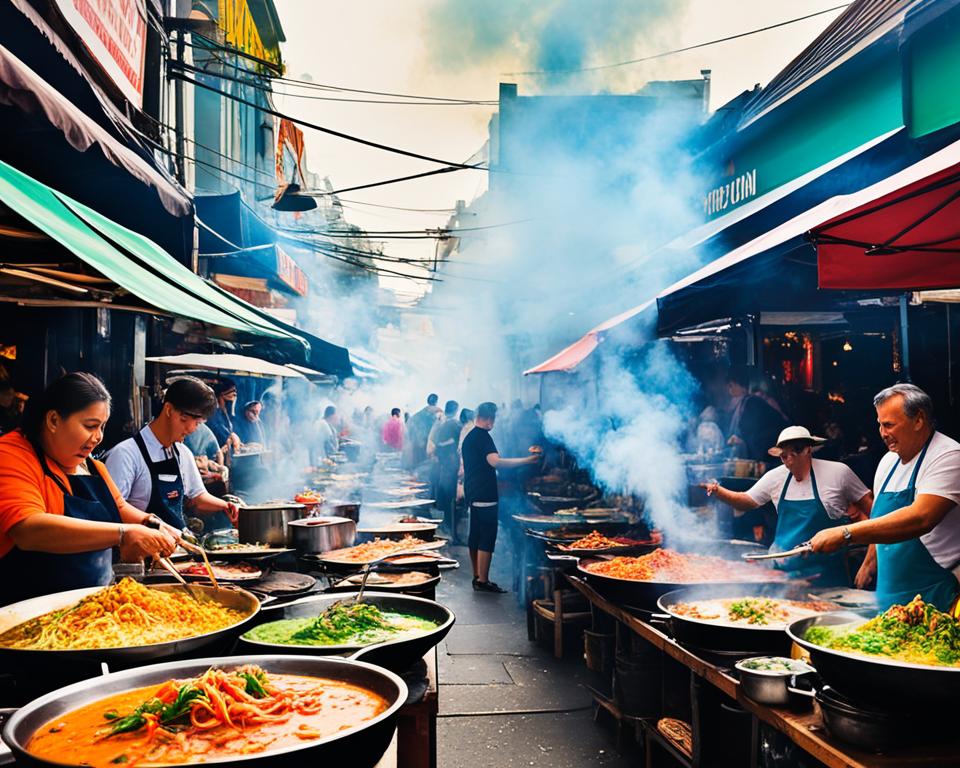
| Top Thai Restaurants in Bangkok | Best Thai Eateries in New York City | Renowned Thai Dining Spots in London |
|---|---|---|
| Nahm | Kin Shop | Rambutan |
| Paste Bangkok | Pok Pok NY | Kiln |
| Sorn | Ayada Thai | Saiphin |
| Sühring | Zabb Elee | Greyhound Café |
Thai Food Culture and Etiquette
Thai cuisine is deeply rooted in the country’s rich cultural heritage and traditions, which are reflected in the way the thai food culture is prepared, presented, and consumed. From the intricate table settings to the etiquette surrounding shared dining experiences, the cultural aspects of Thai food play a vital role in shaping its unique identity and appeal.
Traditional Dining Customs
In the Thai dining tradition, the table is often adorned with an array of small dishes, each containing a different flavor or texture. This approach to dining encourages a shared experience, where guests are invited to sample and savor a variety of complementary tastes. The dishes are typically served family-style, with diners sharing and passing the plates around the table.
Another distinctive aspect of Thai dining customs is the importance placed on the presentation of the food. Dishes are often artfully arranged, with vibrant colors and intricate garnishes that add to the overall visual appeal. This emphasis on aesthetics reflects the Thai cultural appreciation for beauty and the belief that the dining experience should engage all the senses.
Appreciating Thai Food Culture
By understanding the cultural context of thai food culture, diners can develop a deeper appreciation for the ways in which Thai cuisine is interwoven with the larger tapestry of Thai society and identity. From the shared dining experience to the attention to detail in food presentation, the cultural aspects of Thai food offer insights into the values, traditions, and lived experiences of the Thai people.
Engaging with Thai food culture not only enhances the enjoyment of the culinary experience but also fosters a greater understanding and respect for the rich heritage that informs the flavors and traditions of Thai cuisine. By embracing the cultural nuances of Thai dining, diners can fully immerse themselves in the unique and captivating world of Thai thai food culture.
Authentic Thai Recipes
For those who wish to experience the flavors of authentic Thai cuisine at home, this section provides a curated selection of classic Thai dish recipes, along with guidance on how to adapt them to suit different dietary preferences or restrictions. By empowering readers to recreate the vibrant and distinctive tastes of Thai food in their own kitchens, this section aims to encourage a deeper engagement with and appreciation for the culinary traditions of Thailand.
Classic Thai Dishes to Try at Home
Bring the bold and harmonious flavors of authentic Thai recipes to your kitchen with these time-honored Thai dish favorites. From the aromatic Tom Yum Goong (Spicy Shrimp Soup) to the savory Pad Thai (Stir-Fried Rice Noodles) and the refreshing Som Tam (Spicy Green Papaya Salad), these classic Thai dishes offer a delightful taste of Thailand that you can easily recreate at home.
Adapting Recipes for Different Dietary Needs
Embracing the versatility of authentic Thai recipes, this section also provides guidance on how to modify these dishes to accommodate various dietary requirements or preferences. From vegetarian and vegan adaptations to gluten-free and low-carb variations, you’ll discover that the flavors of Thai cuisine can be seamlessly enjoyed by all, making it an accessible and inclusive culinary experience.
Conclusion
In conclusion, the enduring popularity of Thai food can be attributed to its unique and harmonious blend of flavors, its rich cultural heritage, and its versatility in catering to diverse culinary preferences. From the ancient roots and influences that have shaped its development to the nutrient-rich ingredients and health-promoting properties that make it a desirable choice, Thai cuisine has captured the hearts and taste buds of food enthusiasts around the world.
By exploring the various facets of Thai food, we can better understand the reasons behind its global appeal and why it has become one of the most sought-after culinary experiences. The exceptional balance of sweet, sour, salty, and spicy elements, combined with the diverse cultural influences and cooking techniques, have all contributed to the rise of Thai food as a global sensation.
As we delve deeper into the history, ingredients, and traditions of Thai cuisine, it becomes clear that its popularity is not merely a passing fad, but a testament to the enduring allure of its unique and captivating flavors. Whether savoring a steaming bowl of Tom Yum Goong or indulging in the sweet and tangy delights of Som Tam, Thai food continues to inspire and delight food lovers worldwide, solidifying its place as one of the most beloved and iconic culinary traditions on the global stage.
